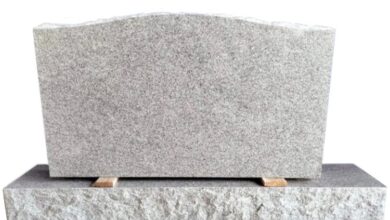
What the Addiction Recovery Process Actually Looks Like in Practice
There are over 20 million people with a substance use disorder in the United States alone. We know that substance abuse can lead to full-fledged addiction.
It is a disease that changes the brain. It makes it difficult to abstain or stop abusing drugs or alcohol.
What might not be clear is what the addiction recovery process looks like in practice. The severity of the case, the individual’s willpower, and the resources available all play an enormous part in the person’s fight against addiction.
Here are some practical steps you need to take for those considering recovery.
Table of Contents
Acknowledge You have a Problem
The addiction recovery process often begins with acknowledging that you have a problem. It can be a difficult step for many people, as it requires admitting that you cannot control your use of drugs or alcohol. But, once you have acknowledged your problem, you can begin to take steps toward recovery.
The addiction recovery process aims to help you regain control of your life. As well as live a healthy, substance-free life.
Seek Professional Help
The drug rehabilitation process usually looks like regular meetings with a therapist to discuss your progress, sobriety date, and goals. You might also see a doctor manage any physical withdrawal symptoms. See a psychiatrist manage any mental health disorders.
Medication-assisted treatment may also be part of their recovery for some people. There is no one right way to recover from addiction, but professional help is always a good place to start. Select a recovery home to start your recovery process.
Find a Support Group
For many people, finding a support group is an essential part of recovering from addiction. Support groups provide a space for people to share their experiences and feelings. It is a space to receive support from others who are going through similar things.
There are many different types of support groups available, so it is crucial to find one that is a good fit for you. It may include family, friends, or a professional treatment program.
The support system will help the individual stay on track and continue to abstain from substance abuse. The support system may also provide accountability and structure.
Make a Plan
This plan should include what you need to do to stay sober. Who can you reach out to for support?
What will you do if you slip up? It is essential to be realistic in your plan and to be prepared for setbacks.
The most important thing is to have a positive attitude and to be committed to your recovery. Making a plan would also mean getting rid of triggers, making healthy lifestyle changes, and setting goals. Read more below.
Get Rid of Triggers
Triggers are anything that can lead to relapse, so it is essential to remove them from your life. It may look like avoiding places where drugs or alcohol are used. It cannot be easy, but it is necessary to stay sober.
Once you have removed triggers from your life, you can begin to work on other aspects of recovery, such as therapy and counseling.
Healthy Lifestyle Changes
One of the most critical things in addiction recovery is making healthy lifestyle changes. It means eating a healthy diet, exercising regularly, and getting enough sleep. It also means avoiding trigger foods and beverages and healthily dealing with stress.
The addiction recovery process is different for everyone. But in general, it requires hard work, dedication, and commitment. If you’re willing to put in the effort, you can make healthy lifestyle changes that will last a lifetime.
Setting Goals
The addiction recovery process looks like in practice setting goals. The first step is to identify the goals that the individual would like to achieve in recovery. These goals could be abstinence from drugs and alcohol, improved mental and physical health, increased job satisfaction, and improved relationships.
Once the goals are identified, the individual must create a plan to achieve these goals. This plan could involve attending self-help meetings, participating in therapy, and making lifestyle changes. Individuals will also need to be patient and persistent to achieve their goals.
Start Rehabilitation
Seeking help for an addiction can be difficult and scary, but it is worth it. The first step is admitting that you have a problem and want to seek help. From there, you will likely enter detox, which can be uncomfortable, but is a crucial step in getting sober.
After detox, you will enter treatment, which may be inpatient or outpatient. Therapy will help you learn tools to cope with triggers and urges and live a sober life.
After treatment, you will continue to work on your sobriety in recovery. It may include attending meetings, therapy, taking medication, and continuing to work on yourself.
Detoxification
It is when the person abstains from the substance they are addicted to. It can be difficult, as the person may experience withdrawal symptoms. However, detoxing is essential to cleanse the body and start the recovery process.
Therapy
After someone has completed the first step of detoxification and withdrawal, they will move on to the second step of therapy. Depending on the addiction’s severity and available resources, it may occur in an inpatient or outpatient setting.
In the best rehab facility, the individual will work with a counselor or therapist to identify the root causes of their addiction. They will also learn new coping and problem-solving skills to help them deal with triggers and cravings.
It can involve one-on-one therapy, group therapy, and 12-step programs. It can also include behavioral therapy and cognitive therapy.
One-on-one Therapy
This therapy is conducted with a therapist and a client meeting one-on-one. The therapist will help the client work through their addiction by exploring the root cause of their addiction. Also, allowing the client to develop coping mechanisms to deal with their addiction.
12-step Programs
Alcoholics Anonymous (AA) and Narcotics Anonymous (NA) hold different types of meetings that cater to different stages of addiction recovery. However, both also share similarities in their approach to helping individuals achieve sobriety. Typically, twelve-step meetings are held in person and involve a group of individuals sharing their experiences with addiction and recovery.
Through these meetings, individuals in recovery can gain valuable insight and support from others going through the same thing. Twelve-step meetings can also help provide a sense of community and belonging for those in recovery, which can be an essential part of the recovery process.
Behavioral Therapy
Behavioral therapy is one of the most critical aspects of the addiction recovery process. Behavioral therapy is a type of therapy that helps individuals change their behaviors and thought patterns to cope better with their addiction. Behavioral therapy can be conducted in individual or group settings, and it generally lasts for a specific amount of time.
During behavioral therapy, individuals will work with a therapist to identify their triggers, develop healthy coping mechanisms, and build a support system.
Cognitive Therapy
Cognitive therapy is a process of addiction recovery that helps people to identify and address the thoughts and behaviors that contribute to their addiction. You can do this therapy in individual or group settings, and it often includes educational components to help people understand more about addiction and how to recover from it. The goal of cognitive therapy is to help people learn to identify and manage their thoughts and behaviors to support their recovery.
Counseling
It is important to remember that addiction is a chronic disease, and relapse is possible. Counselors can help you develop a plan to stay on track and minimize the risk of relapse.
Counseling and therapy help the person understand why they became addicted and how to cope with life without the addictive substance. It can also help develop coping skills and find support and accountability.
Medication
Medication may be used to help with withdrawal symptoms or to help reduce the risk of relapse. Some people choose to go the route of complete abstinence, while others may find that tapering off of their use under medical supervision is a better fit for them.
There are many different paths to recovery, and what works for one person may not work for another. It is essential to find what works for you and stick with it.
Other Treatments
The addiction recovery process looks quite different in practice than expected. Other treatments, such as medication-assisted or inpatient rehab, can play a role in the process, but the focus is typically on individual counseling and therapy.
It can involve group counseling, individual therapy, and family therapy to help the person address the underlying issues that led to addiction. The goal is to help the person develop healthy coping skills and a support system to prevent relapse.
Relapse Prevention
Relapse prevention is a significant part of the addiction recovery process. To prevent relapse, individuals in recovery must identify their triggers and be mindful of their thoughts and emotions. They must also have a robust support system to help them through difficult times.
Many relapse prevention programs are available to help individuals in recovery stay on track. These programs provide education and support to help individuals identify their triggers and develop coping mechanisms to deal with stress and temptation.
Relapse prevention includes identifying high-risk situations, maintaining healthy lifestyle habits, and having a support system.
Identifying High-risk Situations
It means understanding what situations and triggers may lead to relapse and avoiding them. It is important to have a solid support system in place and a plan for what to do if a high-risk situation occurs.
Maintaining Healthy Lifestyle Habits
One of the most critical aspects of recovery is maintaining healthy lifestyle habits. It means eating a healthy diet, exercising regularly, and getting enough sleep.
It is also essential to find healthy ways to cope with stress and avoid trigger situations. Many resources are available to help you recover, and it is important to reach out for help if you need it.
Having a Support System
One component of addiction recovery has a support system. This support system can be in the form of family, friends, or even a professional therapist. The support system is there to help the individual through difficult times.
It also provides guidance when needed. It is also there to help the individual when they struggle with triggers and cravings. Without a support system, the individual may be more likely to relapse.
After Care
There’s no one-size-fits-all answer to what the addiction recovery process looks like in practice. The most important thing is to get professional help and follow through with addiction treatment.
Aftercare is a crucial part of the addiction recovery process, and it typically includes things like maintaining sobriety, attending therapy and support groups, and making lifestyle changes. It’s essential to have a solid support system and be prepared for setbacks.
Stay Focused
The addiction recovery process is a long and challenging journey that requires much focus and dedication. This process takes time, patience, and perseverance, but it is possible to recover and live a happy and healthy life. Staying focused on the goal of sobriety and taking each day one step at a time, it is possible to maintain long-term sobriety.
Celebrate Your Accomplishments
It requires dedication and commitment to change your thinking and behaviors around alcohol and drugs. It means learning new coping skills and ways to deal with stress and triggers. It means making changes in your life to support your sobriety.
It means finding a support system and staying involved in recovery activities and staying motivated and committed to sobriety even when it’s hard. It also means celebrating your accomplishments along the way.
Start the Addiction Recovery Process Today
If you’re struggling with addiction, know that you’re not alone. Millions of people have gone through the addiction recovery process and come out the other side.
A recovering addict usually reaches out for help, whether that’s through a 12-step program, therapy, or another treatment option. From there, you’ll begin to detox and withdrawal from substances. It can be a difficult and painful process, but treatments and medications are available to help.
After detox, you’ll begin working on the underlying causes of your addiction and developing healthy coping mechanisms. Recovery is a long and challenging process, but it’s possible with the right help and support.
Did you find this article helpful? Check out more posts on health and lifestyle topics!








